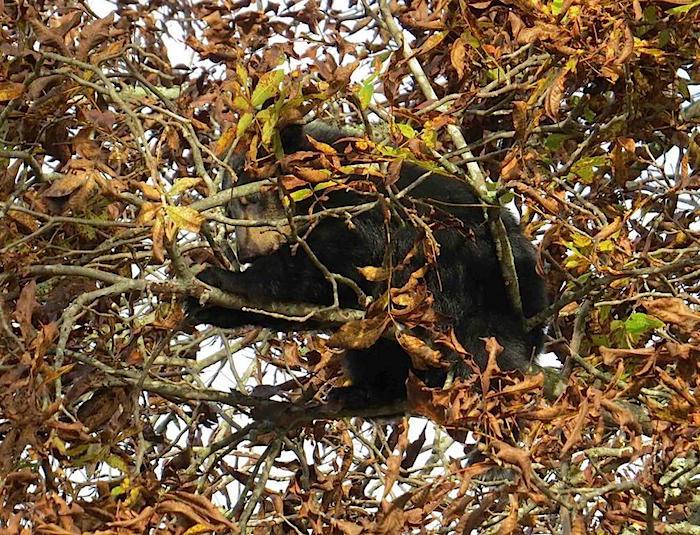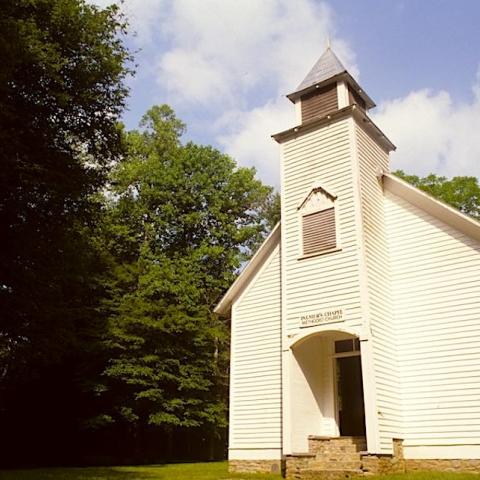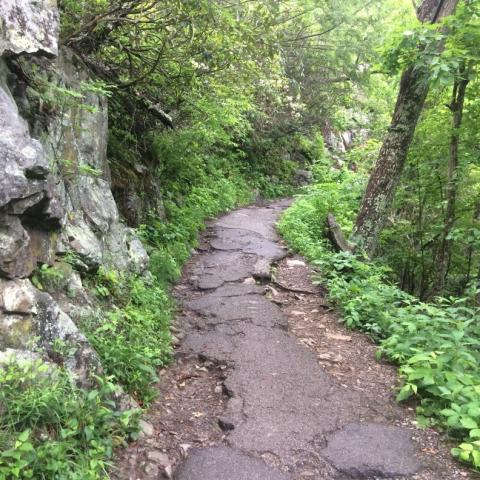
Scarce natural foods have black bears in Great Smoky Mountains National Park eating hickory nuts, which they don't usually do/NPS Volunteer Warren Bielenberg
A poor year for their traditional foods have black bears in Great Smoky Mountains National Park roaming far and wide, leading park officials to remind visitors to keep their distance from bears and to urge folks in communities surrounding the park to keep their garbage, pet food, and bird seed out of the reach of bears.
The park's bears depend on fall foods such as acorns and grapes to store fat reserves that enable them to survive winter. This year, however, these foods in the park are extremely rare, leading bears to move long distances in search of food.
Many bears have been reported well outside the park boundary including several sightings in busy, downtown communities and neighborhoods. Recently, a mother bear with a GPS-monitoring collar and three cubs traveled over 20 miles from the Elkmont area of the park to downtown Sevierville, Tennessee, according to park biologists.
In addition to greater movement in search of food, bears are also foraging on less-desirable mast, such as hickories and walnuts. Park staff have reported as many as eight different bears visiting a single hickory tree to feed on nuts. Park officials are temporarily closing areas around these scarce food sources to allow bears access to forage. Visitors are reminded to respect these closed areas to give bears an opportunity to eat undisturbed and build up fat reserves for the winter. Photographers are reminded to use telephoto lenses to capture photographs and to remain at least 50 yards from bears at all times.
“There were no cherries this year and the hard mast is marginal at best,” said Smokies Wildlife Biologist Bill Stiver. “Because food is scarce, bears are trying to access individual trees in areas they normally would not during good food years.”
Feeding bears is illegal and all food waste should be properly disposed of to discourage bears from approaching people. Feeding, touching, disturbing, and willfully approaching wildlife within 50 yards (150 feet), or any distance that disturbs or displaces wildlife, is illegal in the park. If approached by a bear, visitors should slowly back away to put distance between the animal and themselves creating space for the animal to pass.




 Support Essential Coverage of Essential Places
Support Essential Coverage of Essential Places







Comments
What has made this year a bad year for producing foods favorable to the bears?